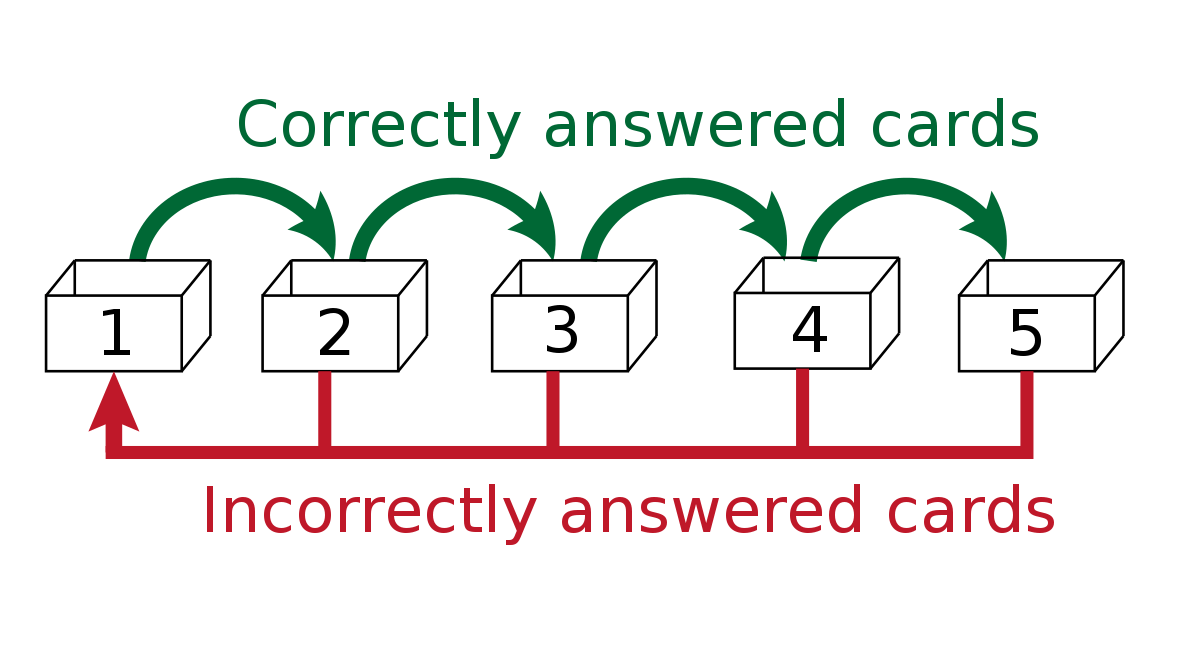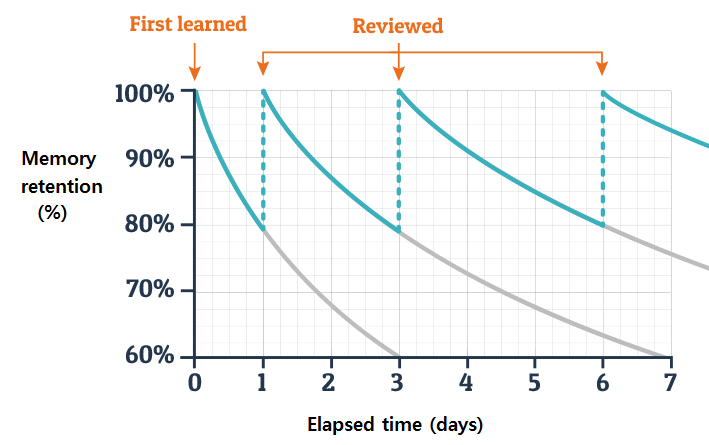Personal Development
(Anki Flashcards) How To Supercharge Your Spaced Repetition & Active Recall
6-1-3-0-9-4Would you be able to remember these numbers for the next few months if I gave you these numbers? I think you should repeat them a few times today, tomorrow, and at the end of the week—and then in a couple of weeks, then in a month, and hopefully you will remember them by then.
What if you had 40 or 100 of those numbers?
In a few months, how many times would you need to repeat them until you remembered them all? Probably quite a few!
Research shows that spaced repetition is effective-but how effective? And how can we make it even more effective? We’re talking about spaced repetitions, which involves revising information over time (for example, at the end of every week).
The Leitner System and Expanding Gap Spaced Repetition

There are several ways to space repetition, but the most basic model is with flashcards via a common model called the Leitner system. The problem is that students repeatedly use this model without understanding its severe limitations.
Spaced repetition can also be referred to as expanding-gap repetition, in which the gap between each repetition gets longer and longer. It’s better than fixed spaced repetition because it increases your chances of forgetting, which means that it’s more likely to stick when you revise the information again.
Spaced repetition has serious limitations
In general, spaced repetition has some serious limitations that basically every high-level student is aware of, but no one seems to talk about them.
First, the way you revise at each time point makes a huge difference.
As an example, simply rereading or rewriting the content produces shallow levels of learning because this is PASSIVE learning (i.e. there’s nothing going on in your brain).
You can also incorporate other principles, such as active recall.
‘Active’ means you’re engaging your brain, and ‘recall’ means you’re retrieving information from memory rather than rereading it. You can learn more effectively this way than passively—and even more effectively by using active recall in conjunction with spaced repetition.
Everyone talks about this, of course.
Aside from the hundreds of YouTube videos from every study guru who speaks about it, there are several other techniques that are even more effective than active recall.
A constructivist method of teaching and revising, for example, involves active recall and active reconstruction (tests you not only on one specific piece of information but also on that piece of information in relation to other pieces of information). In this way, you can revise batches of information at once, and each batch will be more retained since they are all related.
Relational-priority learning is important
There are many techniques you can use to distinguish between information-priority learning and relational-priority learning.
Within teaching, there are certain methods that employ this constructivist tendency by rearranging the information in a certain way. For example, teaching is a highly effective revision technique.
We teach a student version of the ‘whole part whole‘ framework. By using this framework, revision is much more effective.
In addition, you should revise differently each time. You should use multiple types of learning, something called multi-modal learning, and challenge retrieval and encoding from multiple different angles, something called interleaving.
It means you aren’t just studying the same thing over and over again, but you’re studying it from a variety of angles as well. One of the reasons students get stumped by curveball questions is that they didn’t practice the variations of the concept they studied, so they got stumped by them. A good revision strategy should be varied, interleaving, and constructivist.
The amount of revising you need to do becomes unsustainable if you constantly forget things.
Here’s a little bit about what the Ebbinghaus forgetting curve is, which is the basis of spaced repetition.
The Forgetting Curve

In the Ebbinghaus forgetting curve, new information is initially forgotten rapidly. The rate of forgetting (knowledge decay) decreases as you revise it. However, Ebbinghaus forgetting curves are only for information that is memorised—it does not take into account information that has a relationship priority.
For example, the numbers that I gave you at the beginning of this post exist in isolation, so they follow the Ebbinghaus forgetting curves: you will remember them very quickly initially, and then a little bit slower, and then slower. Can you recall the numbers without looking back?
This is why spaced repetition works.
The best way to bypass the need for frequent spaced repetition is to adjust the slope of this forgetting curve in the first place. We can do things so that the very first time you learn something, your forgetting rate happens at a much lower rate. Thus, even one month later, you still retain the information very well—maybe at 90%, rather than 50% or less.

The most powerful thing you can do is not even need to revise because you didn’t forget it to begin with—a feat that only seems possible if you’re a genius. In reality, it’s actually very consistently doable for most students, provided you have at least a moderate level of intelligence. In addition, we have found that these techniques are effective for people with learning disabilities like dyslexia and ADHD. It’s just how our brains are wired!
To do away with periodic repetition, relationship-priority learning is the way to go. As opposed to memorizing each piece of information independently, this approach gives you the option to think in terms of relationships among them and helps you remember them more easily. This way, you don’t have to revise as often; at times, a one-time revision towards the end of the month should suffice for maintaining retention until exams.
If you don’t use spaced repetition at all, you won’t find it effective.
Some of its limitations are probably familiar to you already if you use it. Its biggest limitation is that it isn’t sustainable in the long term: having high levels of spaced repetition requires memorizing and repeating information constantly, which is not mathematically scalable because it increases your workload every day.
Adding expanding-gap spaced repetition on top of Ebbinghaus forgetting curves is much more effective. The difference is that now you need to revise much less than before.
Once you stop relying on spaced repetition, you’ll be surprised how much time you can save.
The thing is, there are actually many study techniques, strategies and approaches out there that are more effective than just active recall & spaced repetition. A whole field of research that we’ve been exploring for years. Our article on Bloom’s Taxonomy will help you upgrade your learning if you’re new to it.


